Bissantz'Numbers – typographically scaled numbers
“Numbers are the best pictures”
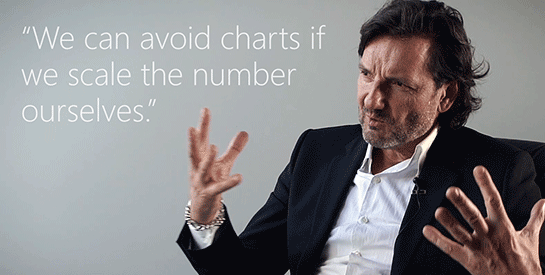
Publicist Murat Suner and Nicolas Bissantz in conversation about Bissantz‘Numbers
Murat Suner: What gave you the idea for Bissantz‘Numbers? Once you have seen the typographically scaled numbers, it is hard to imagine why nobody came up with that sooner.
Nicolas Bissantz: Very true. I would go so far as to say that we live in such picture-obsessed times that the domination of pictures was preventing us from seeing numbers through fresh eyes. For example, tag clouds have been around for some time now, even though the proportionate scaling of text is less obvious than treating numbers the same way.
MS: Were tag clouds a source of inspiration for you?
NB: No. I myself was surprised: Bissantz‘Numbers is a by-product of our eye tracking research on business intelligence – at racetracks.
MS: As in motor racing?
NB: Yes. We wanted to achieve a better and more fundamental understanding of how humans see. We needed a test environment that left no room for error.
MS: Is seeing such a mystery? One might easily think that humans as seeing creatures have been studied extensively and that there are enough ophthalmologists and opticians who know their subject inside and out.
NB: The only part of the eye that sees sharply and in full color is the fovea; it’s also the smallest part of the eye. The portion of the visual field that this covers is about the size of a thumbnail at arm’s length. The brain constructs what we see based on the samples taken by the fovea. A lot of what we see is a projection based on probability and experience. Our understanding of how exactly it all works is still rudimentary. More than anything, however, to date there have been very few attempts to consider the limits of human vision regarding drawing the right conclusions for design. This is what I wanted to address.
MS: You got Hans-Joachim Stuck to drive the famous Nordschleife loop at the Nürburgring, and you recorded his eye movements using eye tracking glasses. What were you hoping to achieve, and what does any of it have to do with tables and infographics?
NB: The only way to improve our understanding of human sight is under extreme conditions, where it is clear that a goal can only be achieved when our sight does its job properly. Top-class sport offers these extreme conditions. But only racing drivers can wear eye tracking glasses. Closed racing cars mean the driver’s head movements are minimized, and vibrations are limited, so the recordings are stable enough for our purposes.
MS: And racing drivers “read” a course in the same way as a manager reads a report?
NB: We first had to find out whether managers and designers could learn anything from racing drivers. All I knew was that our basic research would uncover something new and that we use the same eyes to construct our visual image of a racetrack and a chart. In any case, we were not disappointed. The very first test run delivered some breathtaking findings.
MS: It sounds as if we’re not allowed to know the whole story?
NB (laughs): Correct! Our research is ongoing, and there are a few things we want to keep to ourselves for now. But others are being shared: We are already presenting Bissantz’Numbers, including as a free Excel add-in. So, people can already benefit from our most important finding to date.
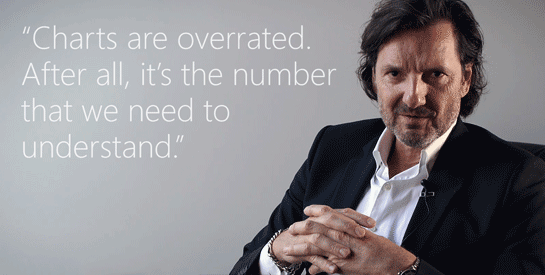

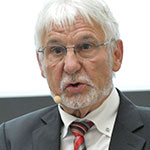

“Bissantz has reinvented the number.”
Dr. Henri Lüdeke, Managing Director, BBT
“Typographic scaling makes it significantly easier for neurons to process numbers.”
Prof. Gerhart Roth, Biologist, University of Bremen
“I had no idea it was possible to experience numbers emotionally yet also rationally.”
Thomas Salow, CEO, Coretastics
MS: Eye tracking has been used in research for some time now. What made your approach so unique that it came up with some new findings?
NB: Eye tracking lets us observe where a person is looking. What it doesn’t tell us is anything about what they are thinking, or whether they understand what they are seeing. By comparing lap times and eye movement patterns between drivers, we can establish which seeing strategies make for faster driving, for instance. We can then use these strategies to devise designs that make things easier for the eye.
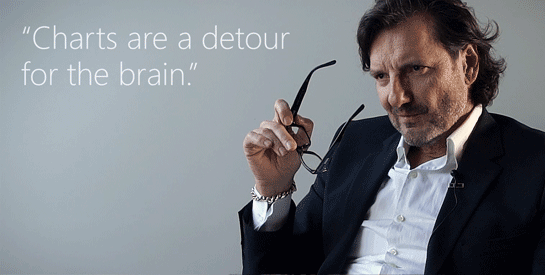
MS: You also make a point of taking the wheel yourself and comparing your own lap times with those of the other drivers. Sounds like a good way of making research fun.
NB: Absolutely! In the winter, we go to racetracks in Spain, where the weather and the food are exactly as you might imagine. Being my own guinea pig is an invaluable advantage. I am still a beginner and an amateur in many respects. Analyzing the data from Hans-Joachim Stuck had already provided us with some big surprises. But I was simply astonished by the tests where I was the one behind the wheel.
MS: Can you give me an example?
NB: Our first evaluations of the eye tracking data showed that the eye is inevitably drawn to contrast. Therefore, professionals learn to ignore contrasts that do not contain any relevant information largely. However, it is impossible to ignore them completely. In other words, we had found the key to attracting an observer’s glance.
MS: And what does that have to do with management information?
NB: Well, I sat down and thought about how the eye is guided when reading a report. A well-made business graphic has the biggest graphical contrast where the figures are most interesting. But a graphical element without a number is meaningless. The result is a constant to and fro between the graphic and the number. As the neurobiologist Gerhard Roth confirmed to me, this toing and froing places a tremendous strain on the human brain.
MS: Really? I thought a picture – and hence a graphic – was supposed to be worth a thousand words?
NB: Images are processed in one half of our brain, while numbers are processed in the other. But key figures like revenue and profit are not three-dimensional, and business reports are not architectural drawings. In other words, both halves of the brain end up competing to interpret a column with a number next to it.
MS: That turns everything we thought we knew about graphics upside down.
NB: It does come as something of a surprise, yes – but there is nothing we can do about it. Whatever we put next to a number, the result is a visual code that our brains then must decode. And that effort is mostly superfluous. What’s more, a lot of charts are misleading, which presents a risk in its own right. Pictures pass by the “gates of consciousness” on their way to our brains. And unlike incorrect words or figures, the brain finds it difficult, if not impossible, to forget incorrect pictures.
MS: I see. Numbers reach our brain consciously. And a bigger number makes for a bigger contrast, thereby guiding our eye in the order of the sizes of the values. But can the same be said for time
series? Even hardcore number crunchers would find it difficult to identify a pattern from a table.
NB: Short time series are perfectly suited for this approach, as the examples on our website show. The compact number formats that we have designed for this purpose help here. We no longer write large numbers out in full. Instead, we abbreviate them. So, 391,412 becomes “391k”, for example, while 1,376,455 is shortened to “1.4m” – all within the same table.
MS: I see. This stops you from having to use an awkward “0.9” for 900,000 just because everything is presented in millions.
NB: Exactly. And if you want things to be even more compact, you can use quotation marks and write 391‘ for 391 thousand and 1.4‘‘ for 1.4 million. Most people whose reports we change in this way don’t even notice that anything has changed. They understand their figures more quickly, and they certainly don’t miss the unnecessary detail.
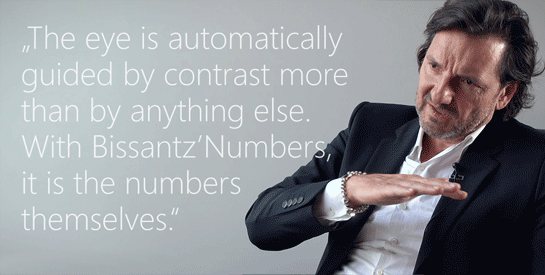
MS: Would I be right to think the same principle could be applied not only to management reports but also in more general contexts, such as newspapers or technical appliances with digital displays?
NB: That’s right. Our website already shows a few examples, such as blood glucose monitors and mixing consoles, and we are working with product designers on further applications.
MS: One of the ways you have made your name is with Sparklines and Graphical Tables, i.e. the integration of bars, columns, and pies directly into the cells of a table. I can’t help but ask: Has the chart had its day?
NB: That is a question I have been wrestling with myself about. Once you start working with Bissantz’Numbers, charts in annual reports start to seem childish and a lot of infographics look as if they were made by nerds for nerds – with little regard to the actual content in either case. I think numbers reveal less than we might often hope, and this little information should be imparted more quickly. I believe Bissantz’Numbers is more objective. It will set the benchmark for the graphical representations of the future.
MS: I’m impressed! And excited to see what happens next.